Blue chickens? Yes, they exist in real life and not just in cartoons!
The chicken world has many blue breeds, ranging from lavender to slate.
These blue chicks result from crossing a black gene with a splash gene chicken (a splash gene-phenotype is blue with a mix of other colors).
Since blue chickens do not breed true– the offspring of two blue chickens will be 50% blue, 25% black, and 25% splash– many of these breeds are hard to come by.
Nonetheless, they are gaining popularity, and more people are cross-breeding to produce a blue variety of common breeds.
The personality, laying ability, and other traits vary as much as their color palette among these beautiful chicken breeds.
Keep reading to see some of the most stunning, rare blue chicken breeds and learn a bit about each of these beauties.
Table of Contents
ToggleBlue Cochin
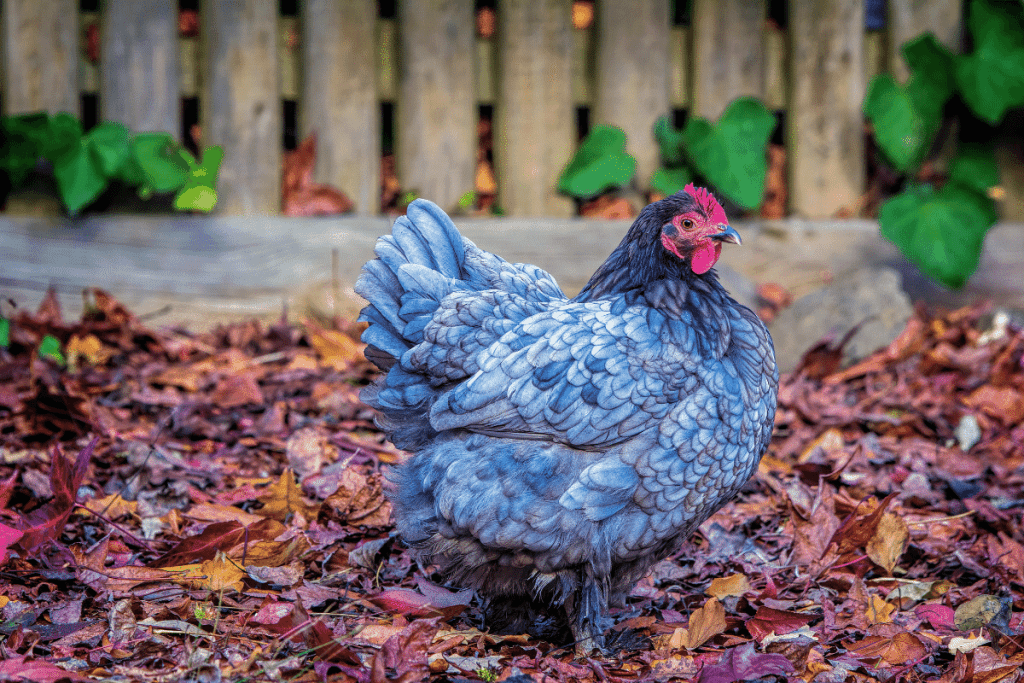
The Blue Cochin is a very fluffy yet regal chicken with lovely grayish-blue plumage down to its feet.
They are large chickens initially imported to the United States from China during the 1800s.
This bird is popular for showing, and it also makes a wonderful addition to a backyard flock.
The Blue Cochin has a very gentle temperament.
This, combined with its extremely soft feathers, makes it a great candidate for a cuddling chicken/pet.
This breed is also known for its excellent mothering skills, and it will readily set eggs.
Blue Cochins are not prolific layers, and as large birds, they are more suitable as a meat bird than a layer.
These birds will tolerate cold weather if the conditions are not too wet.
Their feathered feet make them more vulnerable to frostbite in cold and wet environments.
Blue Ameraucana
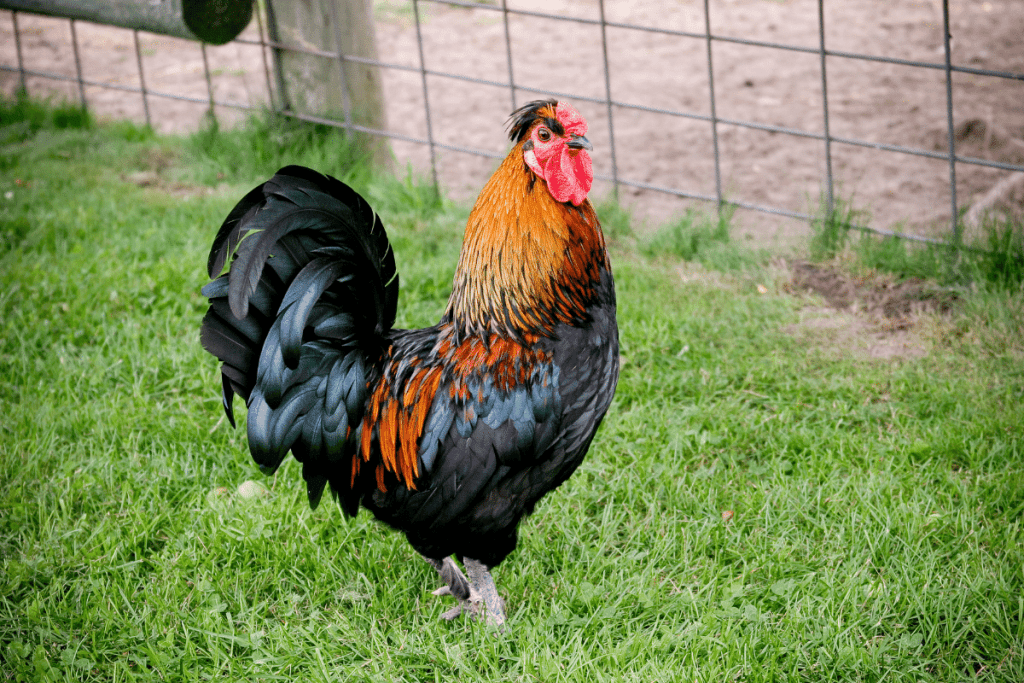
The Blue Ameraucana is famous for its lovely blue-colored eggs.
They will occasionally produce light-green colored eggs as well.
Blue Ameraucanas are a relatively new breed developed in the United States in the 1970s.
It is a distinctive pure-breed, with a pea comb, slate-colored legs, and poofy beards and cheeks.
In addition to their striking appearance, the Blue Ameraucana has a very calm and quiet personality.
They play well with others and are well adapted for cold hardiness.
These birds produce approximately 180-200 eggs per year.
Chickens sold as “Americanas” are also called Easter Eggers and are not the same as this true breed.
Read more: Are Ameraucana chickens aggressive?
Blue Silkie Bantam

The Blue Silkie Bantam is a miniature and highly fashionable blue chicken breed.
It is originally from China and Japan.
Blue Silkie Bantams are covered in an abundance of soft, fluffy feathers from head to toe, and their fluff is more hair-like than most feathers.
Blue Silkies have black skin, legs, beaks, and even bones.
They are also distinguished by their beards, muffs, and fluffy tuft right on top of their head.
These birds have a docile temperament and tolerate confinement well.
Although they do not lay many eggs, they are very broody and make excellent mothers.
Some flock owners will use them to hatch and raise other chickens’ eggs.
Blue-Laced Red Wyandotte

The Blue-Laced Red Wyandotte, also known as the Blue Wyandotte, has unique feather patterns with blue lacing over reddish, coppery feathers.
It is an old breed originating in the United States, developed to be an excellent dual-purpose bird for eggs and meat production.
This bird produces approximately 180-260 large brown eggs per year—about 4 per week.
Their fertility is lower than average, and they are not a very broody breed.
The Blue Wyandotte is an excellent breed for free-range foraging, but it will also tolerate confinement.
Since they are not great flyers, they are unlikely to escape an enclosure.
Though I would not classify it as a “lap chicken,” it is a calm bird.
They prefer the company of their breed and will likely be at the top of the pecking order to assert their own space when placed in a mixed flock.
Blue Andalusian
The Blue Andalusian is a free-ranging hardy type of bird from the Mediterranean.
If the beauty of this breed appeals to you, make sure you have ample space for it to roam.
It does not like to be confined and will easily fly out of a non-covered coop or enclosure.
The Blue Andalusian is considered cold-hardy, though their large, pointed, red combs are susceptible to frostbite.
Like many Mediterranean breeds, these birds have a small, lean body type, and they do well in warm weather.
Blue Andalusian chickens mature quickly.
They are decent egg layers, producing approximately 150 medium-large white eggs per year.
Blue Andalusians are an active breed, and while they are not aggressive, they tend to get skittish and noisy when confined or if you attempt to pick them up.
Blue Sumatra
The beautiful and elegant Blue Sumatra chickens are more ornamental birds than a production bird.
They are native to Indonesia and were initially used as seasonal fighting birds.
They were first imported to the U.S. during the 19th century.
It is an ancient breed, and it has a somewhat exotic appearance.
It has some features resembling a wild game, such as its pheasant-like long tail and multiple spurs.
These chickens are also excellent fliers for a domestic bird.
They are small in stature, slow to mature, and produce about 100 eggs per year.
They also continue to lay during the winter.
Blue Sumatras have somewhat of a mixed reputation in terms of temperament—it is a very active bird, and while some owners claim they are docile, others find them aggressive.
These birds are a broody breed (especially in late Spring) with good mothering instincts.
Blue Bresse Gauloise

The Blue Bresse Gauloise is a dual-purpose French breed most well known for its meat quality.
Technically, due to the French government’s breed standard and legal restrictions on the term “Bresse Gauloise,” they may only be sold and marketed as the famous “poulet de Bresse” if they are white chickens of this breed raised in their home province in eastern France.
The Bresse Gauloise is considered by many to be one of the finest-quality meat birds, and they are also good seasonal layers.
These birds produce approximately 200-250 eggs per year.
It is a fast-growing, heavy breed with characteristic blue legs.
These birds are somewhat high maintenance, as they require free range, protection from extreme weather, and a large amount of feed to reach maturity.
The Blue Bresse Gauloise is a quite skittish and active breed.
If you like funky chickens, check out these breeds with wild hair.
Blue Dutch Bantam
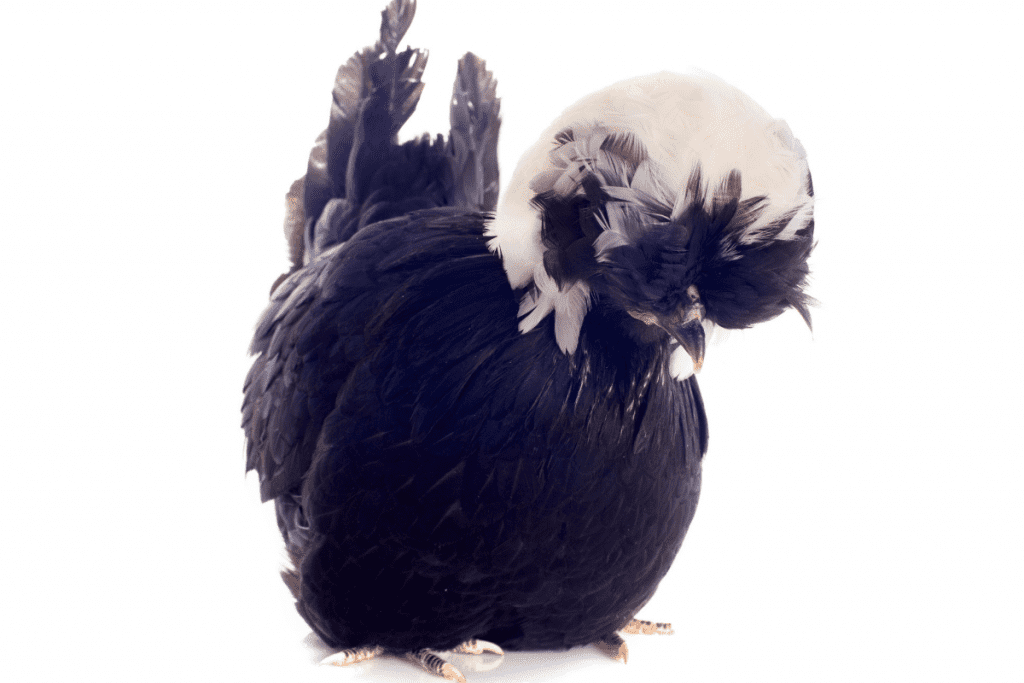
The Blue Dutch Bantam is a naturally small Dutch breed.
This makes it a true Bantam breed rather than a pure-breed hybridized to have a miniature form.
Because they produce such small eggs, they are most often kept as backyard chickens and pets or for show.
They will lay about 150 small cream eggs per year and are fairly broody.
They are good fliers due to their lightweight.
Although their temperament is generally friendly, they are also an intelligent breed, and they may escape confinement if their wings are not clipped.
These birds are not very cold-hardy and should be protected from very low temperatures.
Delaware Blue Hen
Although this bird is not an official chicken breed, it deserves mention for its beautiful plumage of steel blue feathers.
The Delaware Blue Hen was designated the official state bird of Delaware in 1939.
These birds were popularized as symbols of courageous fighting during the American Revolutionary War.
This reputation purportedly comes from a particular chicken owned by a Delaware soldier during this era.
Delaware Blue Hens are fair layers with a flighty and skittish temperament.
The roosters, in particular, get aggressive once they reach maturity.
Blue Jersey Giant
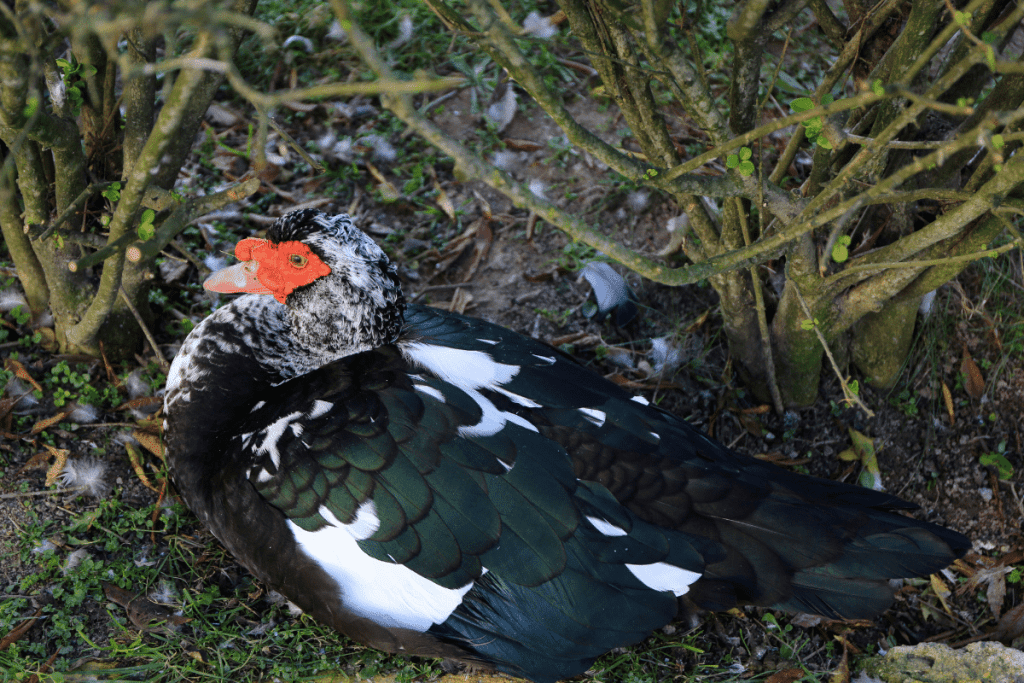
Aptly named, the Blue Jersey Giant is a very large, robust, dual-purpose chicken.
This extremely heavy breed was developed during the 19th century in New Jersey.
Their feathers are a slate-blue laced with a darker shade of blue.
These birds are slow-growing.
Mature hens reach a whopping 11 pounds, and mature roosters weigh about 13-15 pounds on average, making them one of the largest purebred chickens in the world.
Fortunately, these are gentle giants, known to be extremely docile and friendly birds.
Their eggs are very large, but they will not start to lay until about 6 months.
They lay about 150-200 eggs per year.
These friendly chickens get along well with others, and they enjoy plenty of space to wander and forage.
Blue Plymouth Rock
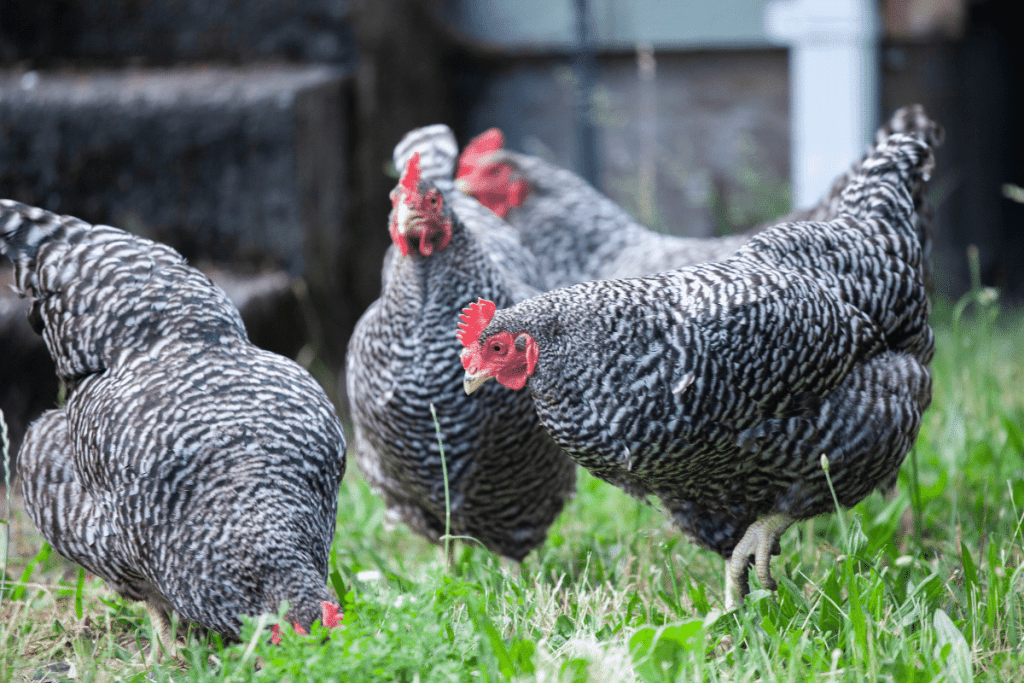
Blue Plymouth Rock chickens have a calm and friendly temperament, making them an ideal backyard breed.
This blue hybrid breed is produced by crossing an Andalusian rooster with a Barred Plymouth Rock hen, resulting in their characteristic light-blue to lavender feather color.
They are prolific layers, producing up to 300 large eggs per year.
In addition to being excellent layers, Blue Plymouth Rocks are good foragers and are easy to raise free-range.
These beautiful birds are both cold-hardy and heat-tolerant, and they do not tend to go broody.
Whether you are looking for a pet chicken or a production bird, or a bit of both, this American breed is an excellent choice for backyard chicken raisers.
Blue Plymouth Rock chickens are quiet, independent, robust, good layers, and low-maintenance birds.
White Crested Blue Polish
The White Crested Blue Polish is an ornamental breed and a popular choice for those looking for an exhibition bird.
This blue breed is one of the older European breeds developed as early as the 16th century.
It is most notable for its big crest of feathers resembling funky top hats.
This funny-looking crest is due to a knot on the top of its head.
Despite their name, they were not developed in Poland.
They are called “Polish” because the top of their heads look like the feathered helmets Polish soldiers used to wear.
They first became popular in the United States starting in the 19th century.
Despite their beautiful appearance, their large crest can impair the bird’s vision, causing them to be quite skittish in temperament.
Keeping this crest clean and trimmed will help these birds maintain healthy eyes and manage their skittish nature.
These birds are not very broody, and they will lay approximately 200 white eggs throughout the year, though they are not considered reliable layers.
White Crested Blue Polish chickens have medium-sized bodies and sometimes have muffs and beards.
Whiting True Blue
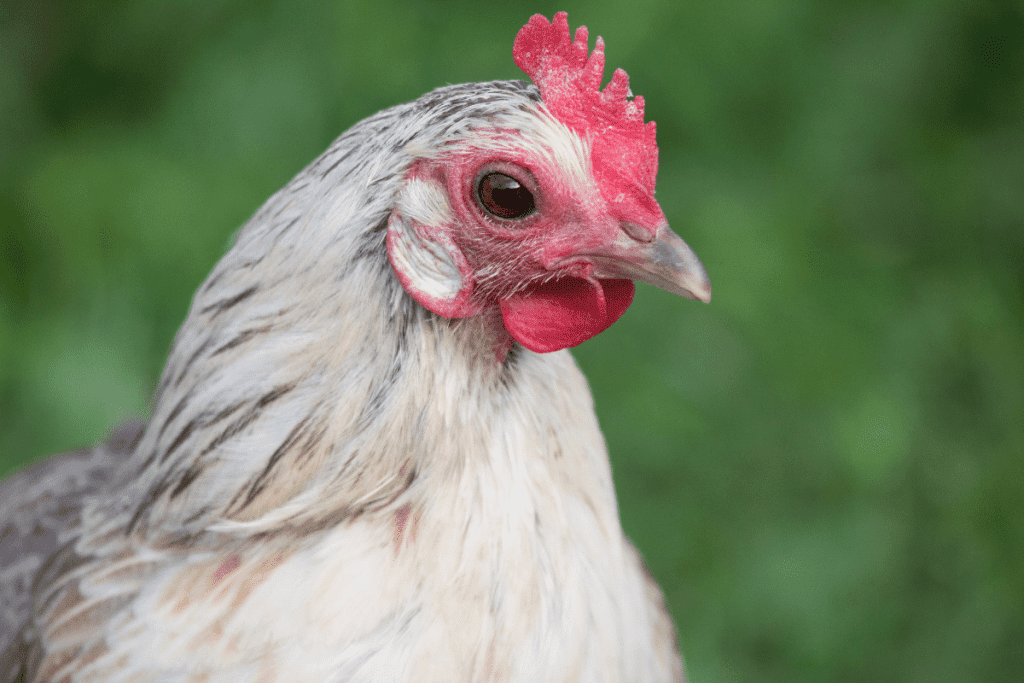
The Whiting True Blues come in a wide variety of colors, including a solid shimmering blue, light-grayish blue, and numerous splash varieties.
They are sure to add a touch of color to your flock and your egg carton.
What all of these color varieties have in common, however, is the vibrant blue color of their eggs.
Their blue egg color trait also breeds true, unlike their feather coloration, so you are able to continue breeding the blue egg gene in your flock.
The Whiting True Blue is a modern breed developed in the United States.
Initially, the breeder (Dr. Whiting) intended to develop a rooster with long hackle feathers to use in his fly-tying hobby as a fly fisherman.
He was eventually able to produce this lovely, high-producing, and docile bird with unique eggs.
Whiting True Blues are prolific layers with an average of 280-200 eggs per year.
They are also excellent winter layers.
These birds mature at approximately 5 months old.
Their first eggs will be medium in size and gradually become larger.
They are medium-sized and easygoing birds.
They will get along well with other chickens and are also heat and cold-hardy.
Blue Australorp
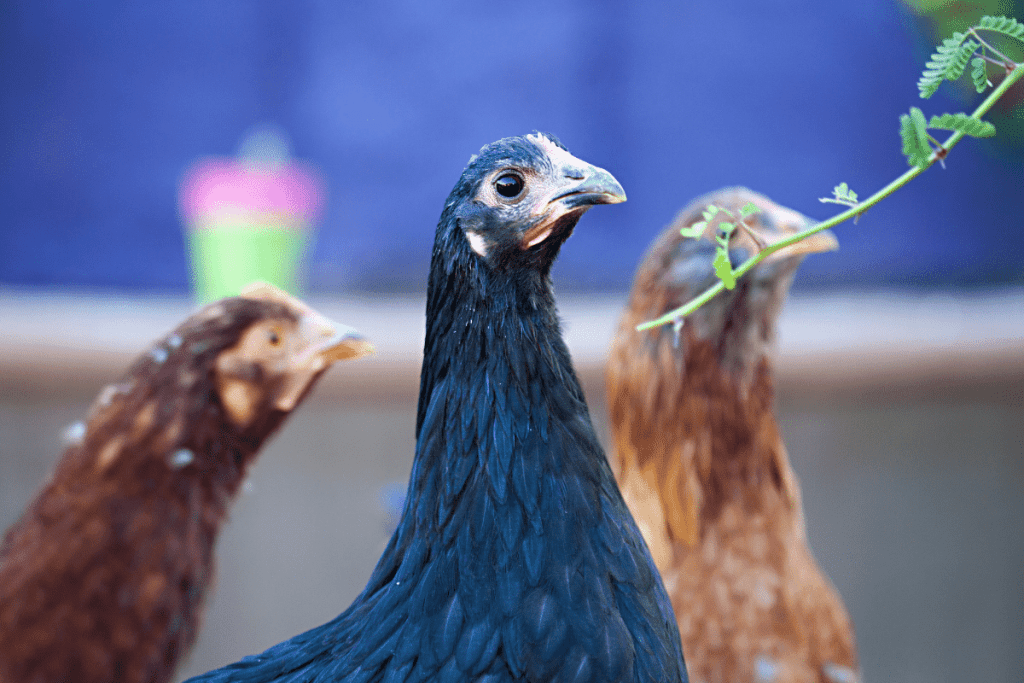
The Blue Australorp is a dual-purpose breed of chicken originating in Australia and first imported to the United States in the early 20th century.
Its name comes from combining the words “Orpington,” its British chicken parent, and “Australia.”
The Orpingtons were crossed with Langshan chickens to create this prolific layer of large brown eggs.
Their claim to fame is holding the Guinness World Record of laying an incredible 364 eggs in one year!
The hens weigh an average of 5 lbs, and mature roosters weigh an average of 7 lbs.
They are both cold and heat-hardy.
Blue Australorps have a very gentle and docile nature.
They make a great addition to backyard flocks as both producers and pets.
Other color varieties besides the Blue Australorp include white and black Australorps with purple and greenish hues mixed in with the black feathers.
How useful was this post?
Click on a star to rate it!
We are sorry that this post was not useful for you!
Let us improve this post!
Tell us how we can improve this post?
